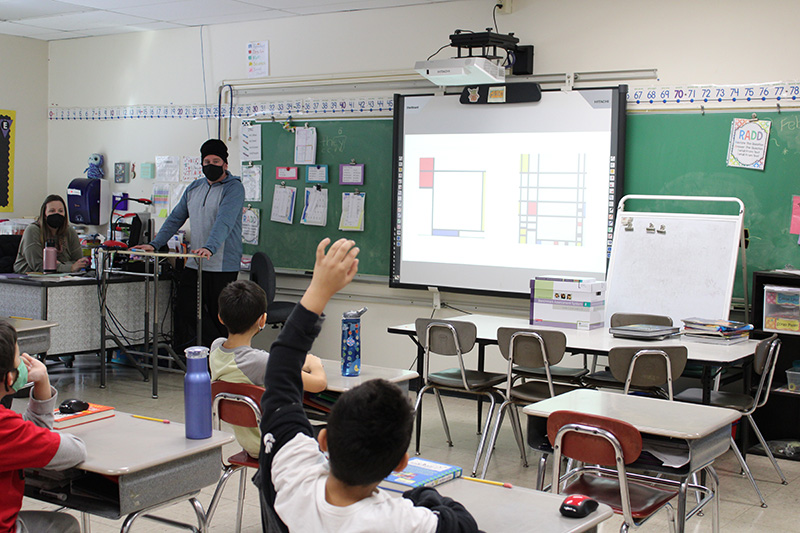Students at Golden Hill recently had an incredibly interesting lesson that incorporated math and art and the artwork of Piet Mondrian.
Mondrian was a Dutch artist born in 1872. While his early artwork included landscapes, especially trees, what he is known for is his abstract art that uses lines and sparce color. Fifth-grade students studied Mondrian and his art. They learned that his abstract art used the primary colors – red, blue and yellow – on a white background that is more than 50 percent of the painting. He used black lines to create rectangles and squares in his art – there are no triangles, circles or any other shapes. All of his art was made the same size and while the black lines can go through the colors, the colors never touch. Fun fact – Mondrian never used a ruler to draw his lines.

Interesting!
The fifth-graders set out to recreate Mondrian’s artwork. But there was a catch – all but one of the works of art were to be fakes. Some were really good fakes, some were obvious fakes. The 45 pieces of art were posted on two bulletin boards for all to see and study.

The students in the other grades were learning about Mondrian as well. And their math lessons were incorporated into this – kindergartners are working on shapes, grade three is into fractions, grade four is working with geometry, and parallel and perpendicular lines. It all connects to this art! Math teacher Tim Healy and art teacher Nicholas Camia worked together to make this project so interesting and effective.

“So much of what we need to do as teachers is to inspire curiosity – give our students the spark to want to learn more,” said Mr. Healy. “Much of the credit for lessons like this really go to Mr. Camia, our art teacher, and our classroom teachers who allow us to push into lessons that we don’t typically see in most places. The more ways students can see something, the more likely they are to learn it.”
The students’ task was to study the artwork on the bulletin boards and select the one they believed was a real re-creation of a Mondrian. This wasn’t easy! Mr. Camia gave the fifth-grade students specific instructions. Some had to make obvious fakes. Others, less obvious ones. Still others, were SO close to the real thing. Only one was the real deal.

After painstaking comparisons, the students took a photo of the piece of art they were choosing as the real Mondrian. They discussed in class why they chose the ones they did and compared the reasons why.
In the end, the classes with the most correct guesses won a Mondrian-themed puzzle – which ironically had a picture of the ‘real’ Mondrian used in this art project right on the cover!



